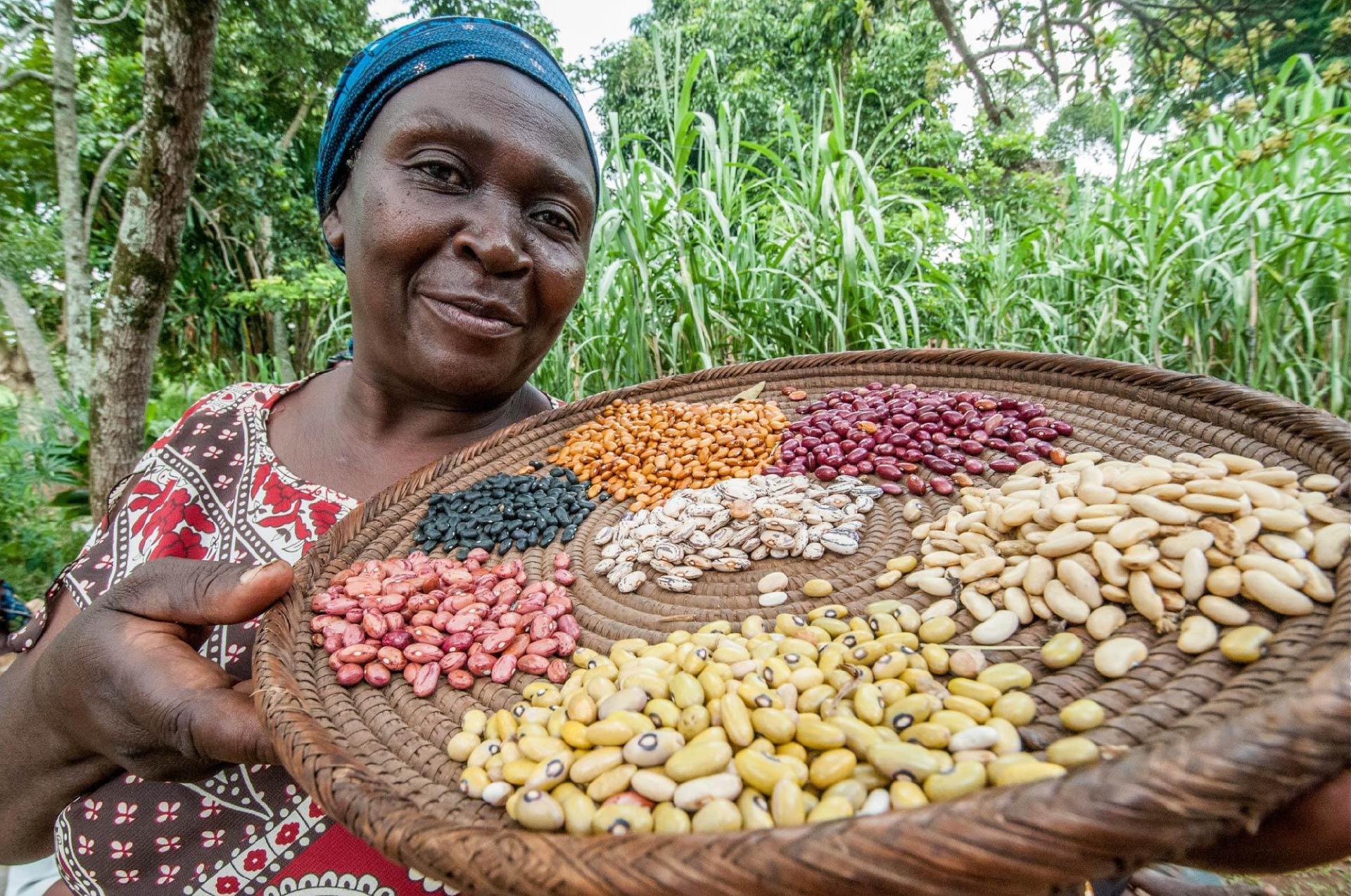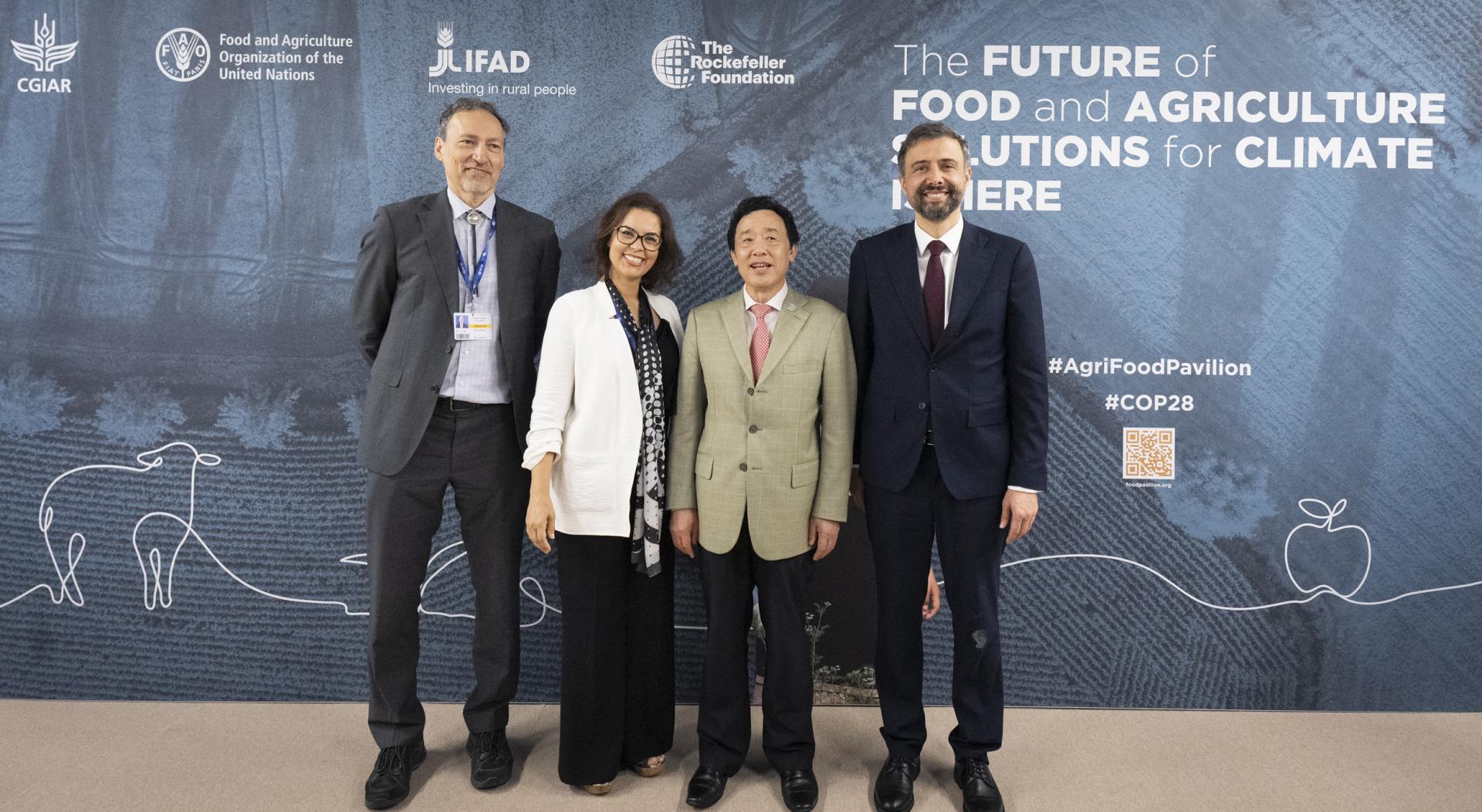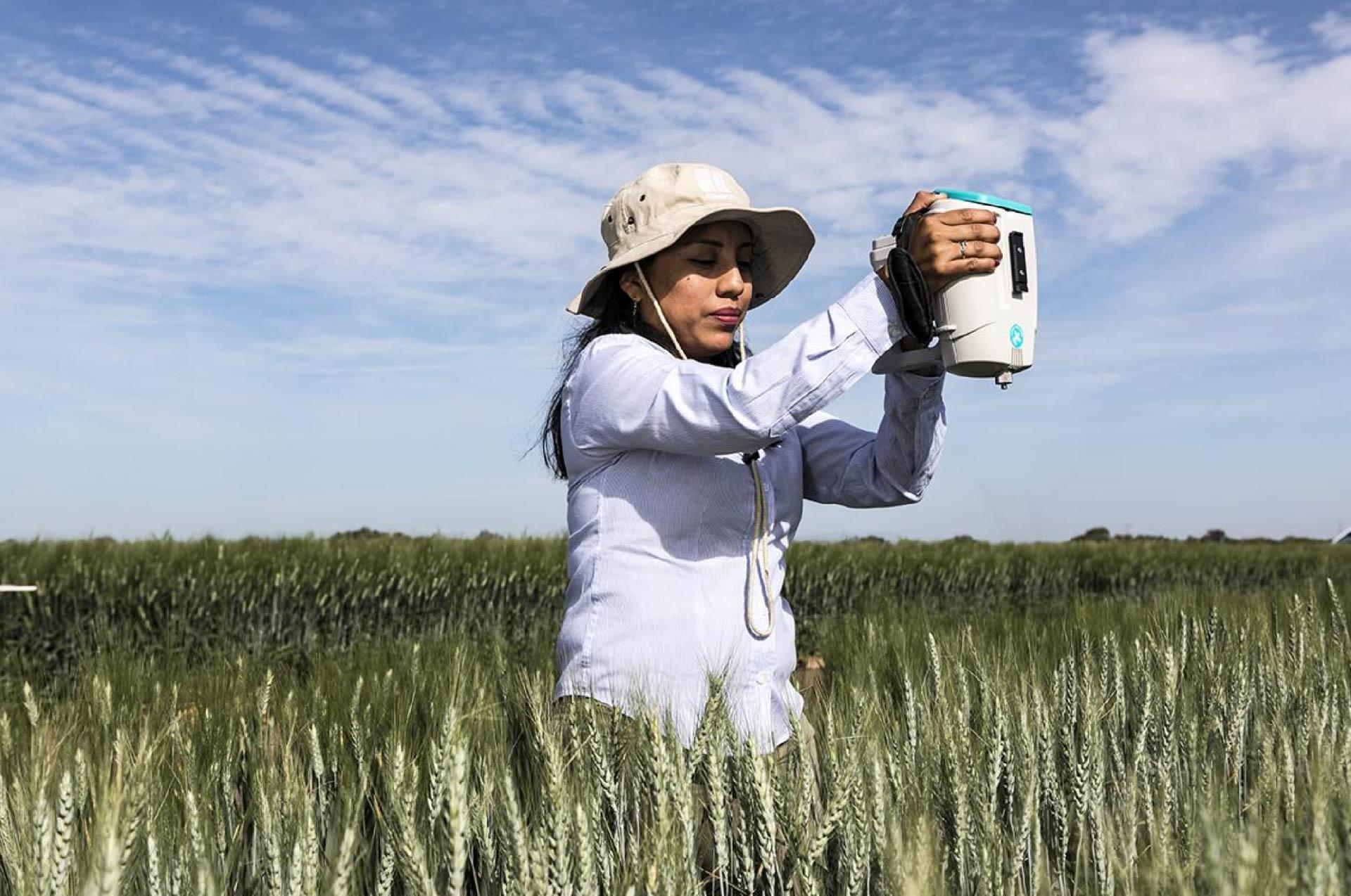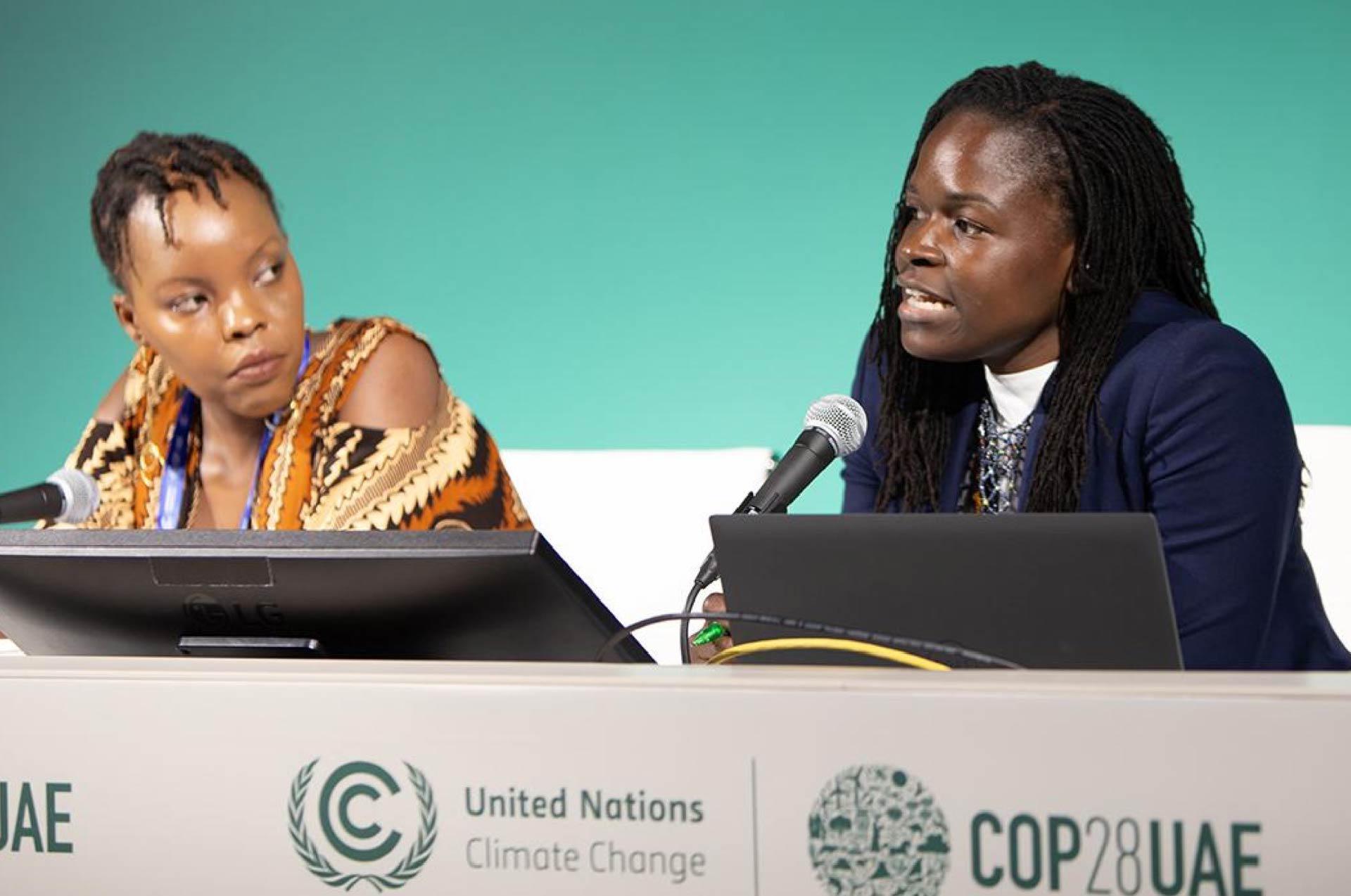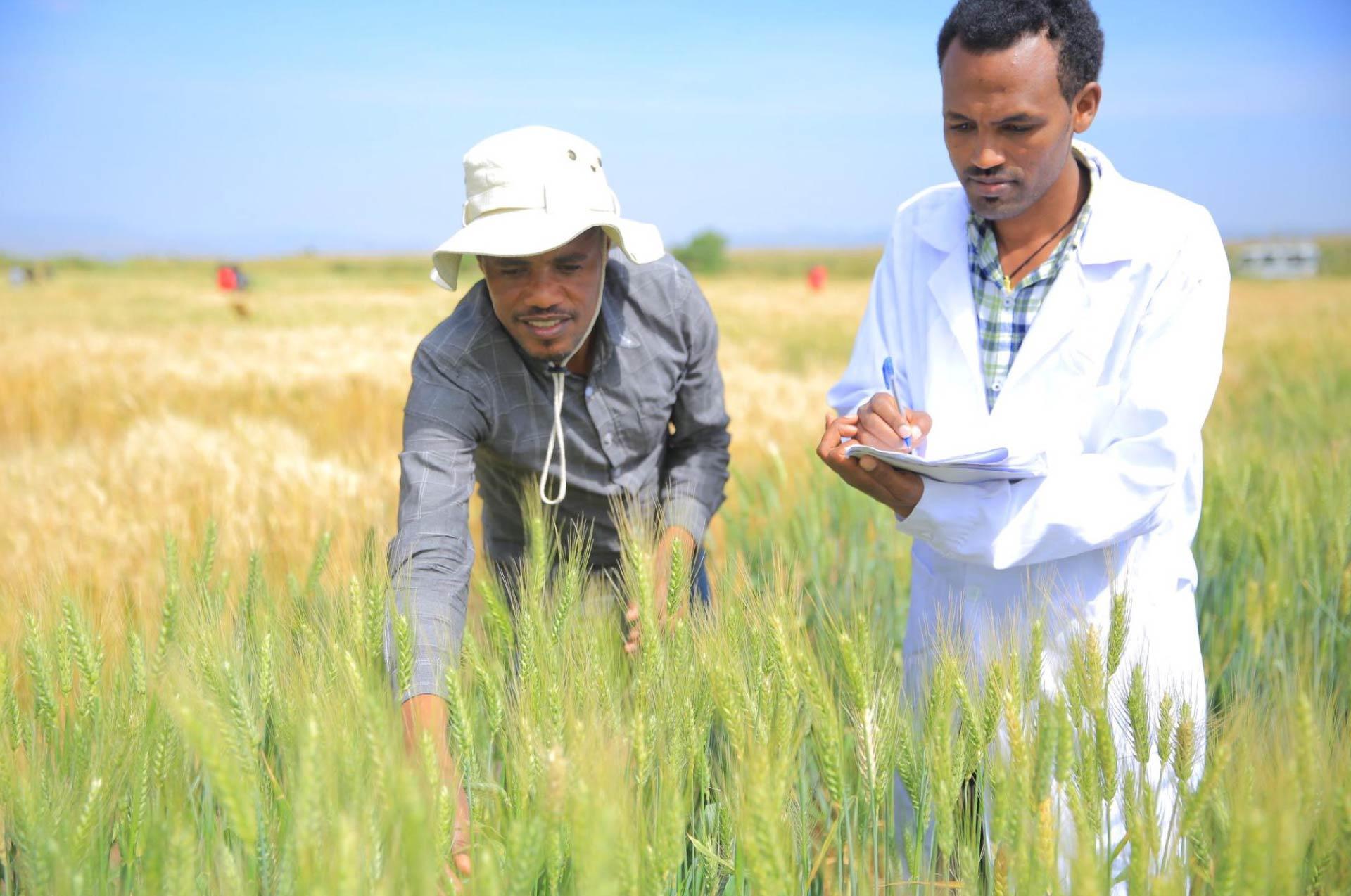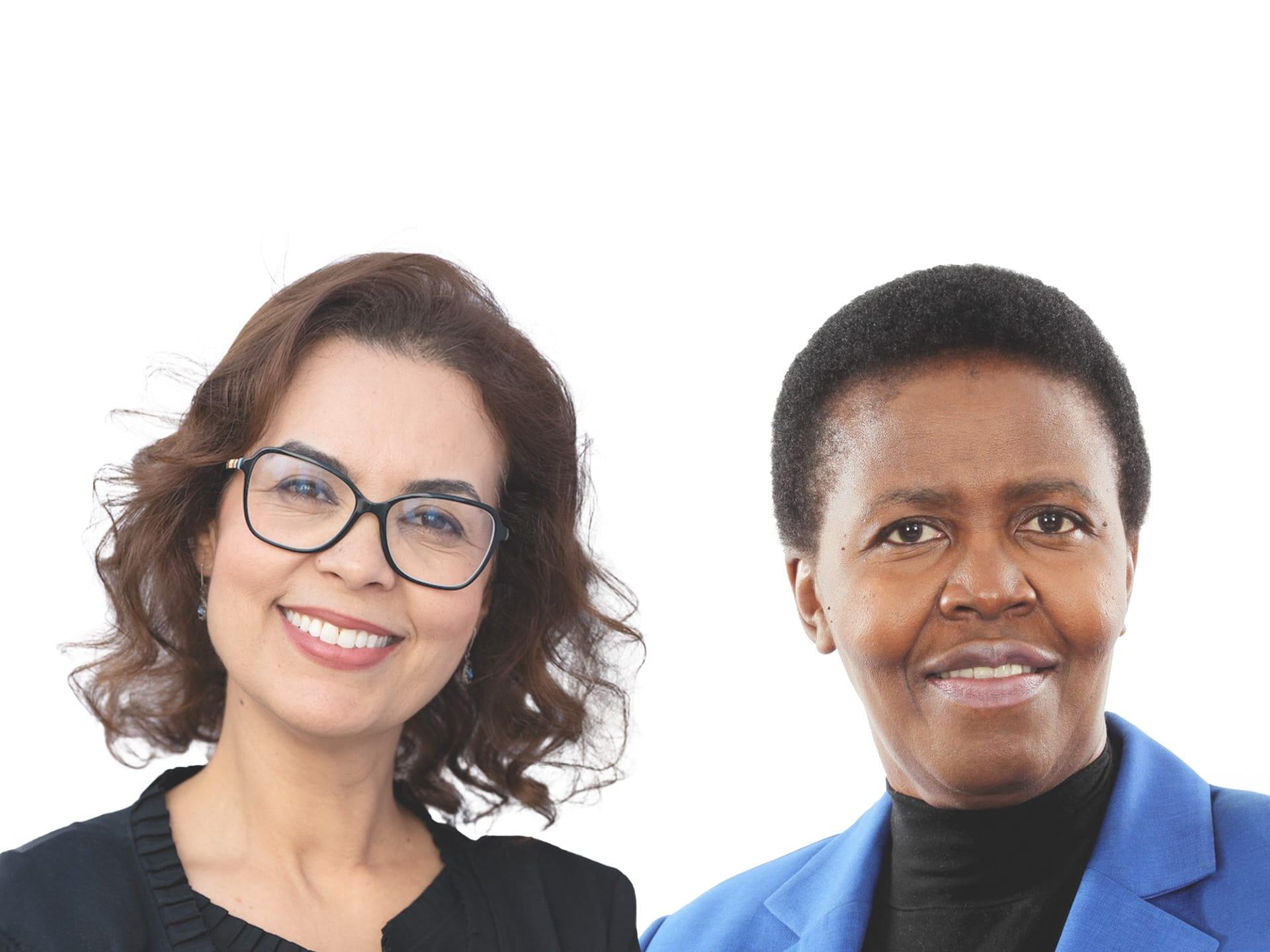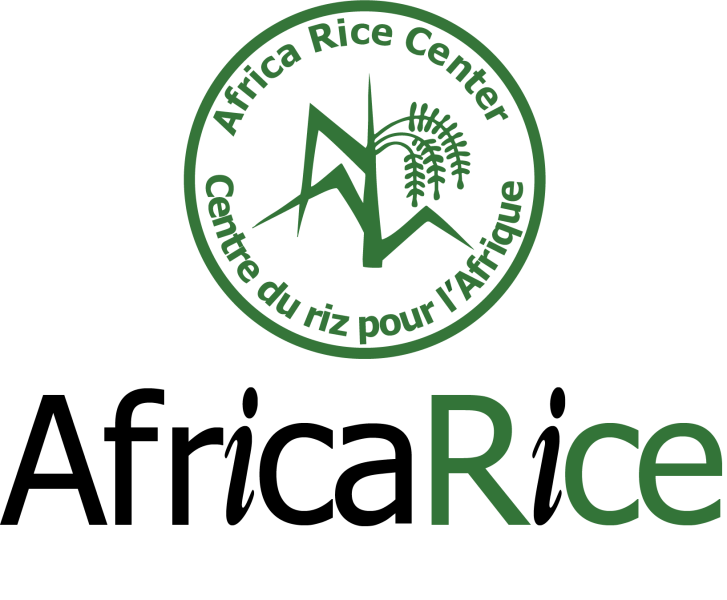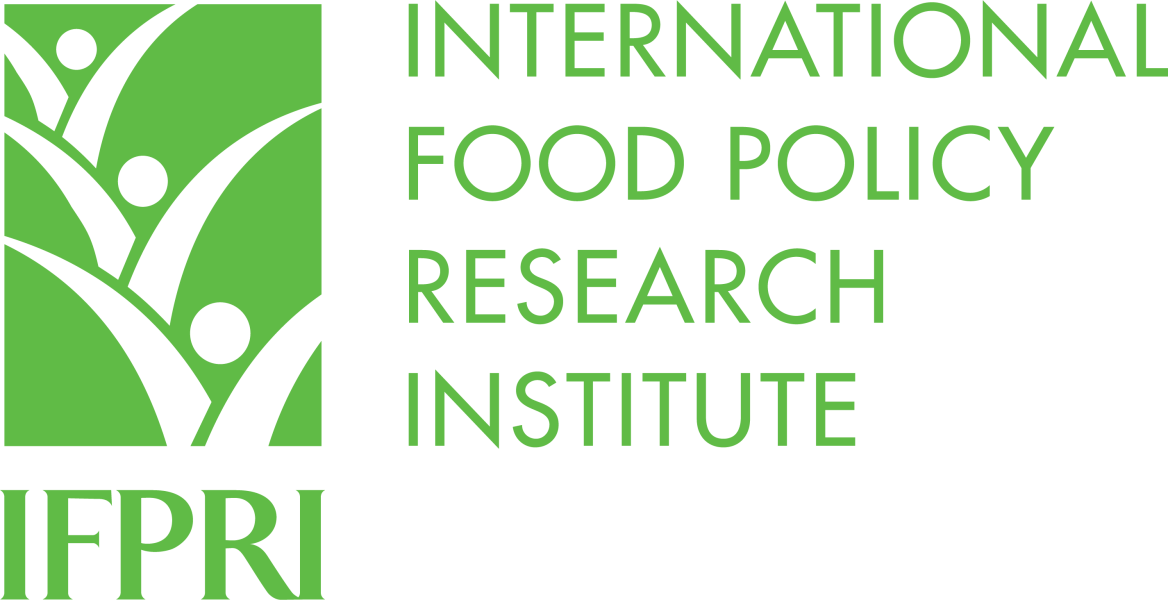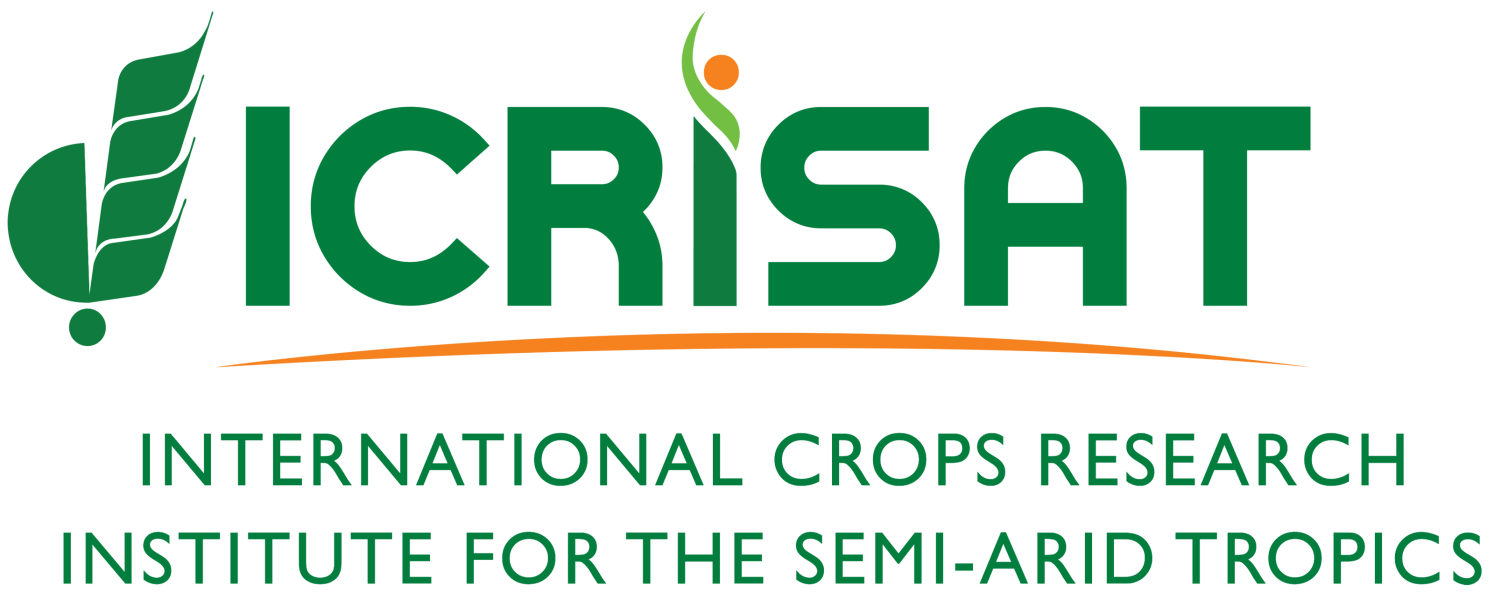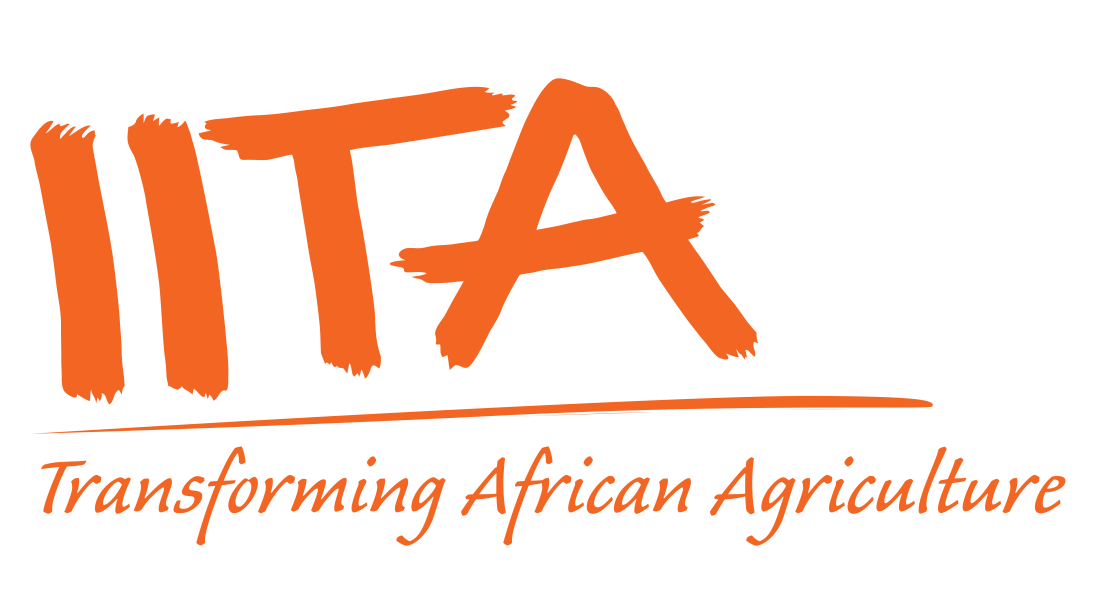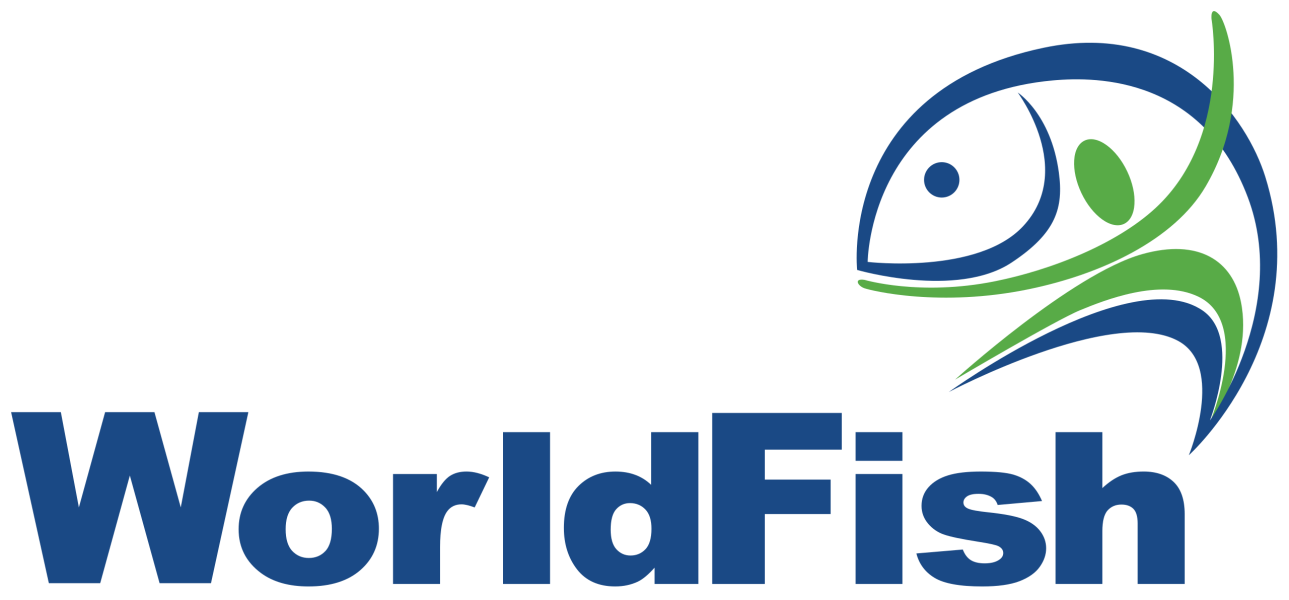Overview of results
In 2023, 41 percent of results (2,487) reported by CGIAR addressed gender equality as a significant (30 percent) or principal (11 percent) objective. This is a marked increase from 35 percent of results in 2022. However, gender equality remains the least addressed among CGIAR’s Impact Areas (Figure 1).

Figure 1. Impact Area focus across all results shows gender equality to be least represented overall, although fairly well represented in the share of principal results.
Regional distribution of gender-related results followed CGIAR-wide patterns. Most outputs and outcomes related to gender equality focused on Eastern and Southern Africa (731), followed by South Asia (397), West and Central Africa (379), Latin America and the Caribbean (253), Southeast Asia and the Pacific (222), and Central and West Asia (139). There was little variation in this regional distribution between principal/significant results and across Science Groups, although ST showed a slightly greater focus on West and Central Africa.
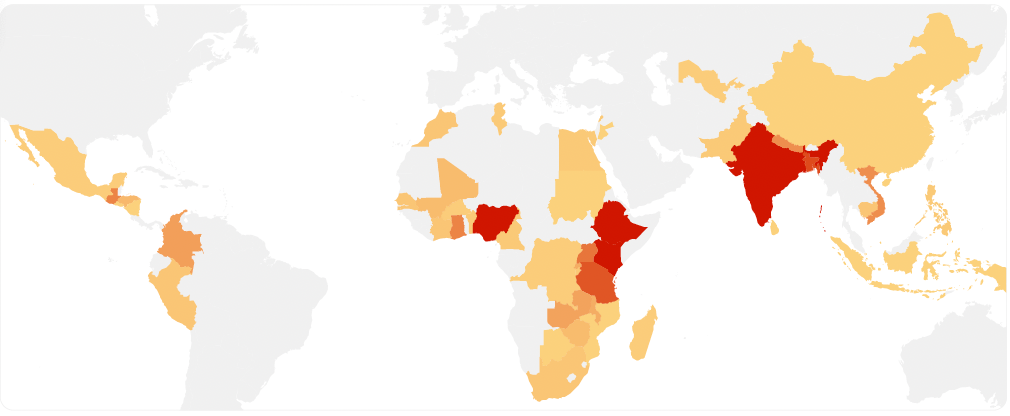
Figure 2. Geographic distribution of results with a principal focus (2) on gender.
A focus on gender equality was often combined with attention to other Impact Areas. The greatest synergies were with poverty reduction (targeted in 76 percent of gender-related results) and climate change (73 percent). Of particular relevance is the correlation between principal foci on gender equality and climate change, suggesting a substantial number of results focused on gendered climate impacts, resilience, and mitigation and adaptation strategies.
All Initiatives and most Impact Platforms produced at least one output addressing gender equality, but this focus was not equal across Initiatives (Table 3). The Gender Equality Initiative generated the most outputs related to this Impact Area, 99 percent of which had a principal focus on gender equality. The Gender Equality Initiative and GENDER Impact Platform together produced 15 percent of all results touching on gender equality, and 52 percent of the results with a principal focus on gender equality. Other Initiatives with a fairly consistent focus on gender include the CGIAR Research Initiatives on Seed Equal; Fragility, Conflict, and Migration; Sustainable Healthy Diets; and Diversification in East and Southern Africa.

Figure 3. Number of results that targeted gender, by type of output/outcome.
Gender-focused results emerged from extensive partnerships between Initiatives and local and international partners. Most partnerships were with national universities (565 results), NARS (562), national governments (mostly agricultural departments and ministries) (364), private companies (201), and international NGOs (157). University partnerships contributed a large number of gender-related knowledge products (300), while NARS, national government, and private sector partners each contributed to about one third of gender-related innovation use outcomes. NARS partnerships were specifically common in GI (228), with more than half of the gender-related GI results emerging from these partnerships. Overall, seven of the top ten partners contributing gender-related results were NARS partners, suggesting strong collaboration with local research and extension teams on gender-related outputs and outcomes.
Key gender-related outputs and outcomes
Of the 5,812 reported CGIAR outputs, 39 percent addressed gender equality (10 percent “principal” and 29 percent “significant”). The focus on gender equality was somewhat lower than the other Impact Areas for outputs (47-59 percent for other Impact Areas). The greatest share of gender-related outputs was for knowledge products (50 percent), followed by capacity sharing for development results (20 percent), innovation development (18 percent), and other outputs (12 percent) (Figure 4).
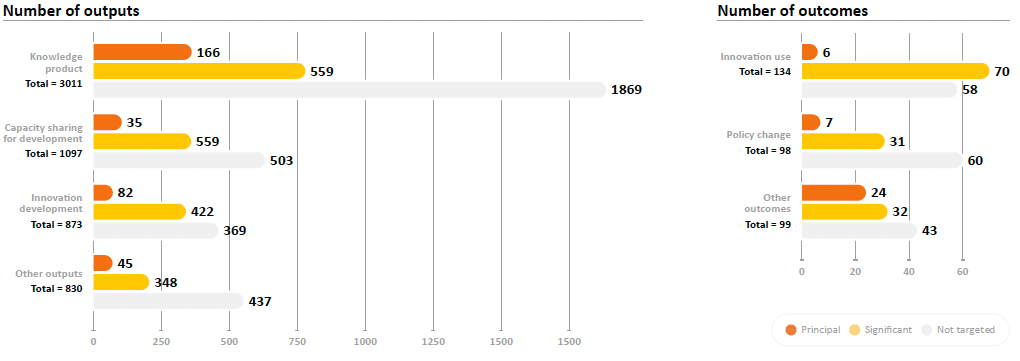
Figure 4. Number of results that targeted gender, by type of output/outcome.
Gender-focused knowledge products included a wide range of academic publications, reports, case studies, and training manuals. Knowledge products with a principal focus on gender explored in-depth how gender shapes farming system outcomes, with attention to topics such as gender and social norms, gender-transformative approaches, intersectionality, and intrahousehold dynamics. Results included, for example, an assessment of women’s visibility and bargaining power in the common bean value chain in Mozambique, a situational analysis of climate change-agriculture-gender inequality hotspots in Bangladesh, and an analysis of gender inclusion and intersectionality in policies related to climate change, land and food issues in Latin America.
Capacity development especially targeted NARS (29 percent) and government partners (20 percent), in market segmentation and product profile development, gender-responsive research and outreach methodologies (including human-centered design), and women’s empowerment. A small number of training programs/sessions also directly built women’s and youths’ skills in areas such as vegetable seedling production, fish farming, and agribusiness generally.
Innovation development results focused on gender equality related mainly to the collection of gender-disaggregated data and analysis of gendered crop and variety preferences, or incorporation of gender in market intelligence and product profile design. For example, the Accelerating Breeding Initiative accelerated genetic gains for rice and sweet potato by drawing on gender-disaggregated preference data, which they used to identify lines suitable for diverse market segments and to release new varieties in Bangladesh, India, and Mozambique.
Of all CGIAR outcomes reported, 53 percent (189) related to gender equality (11 percent “principal” and 42 percent “significant”). The focus of outcomes on gender equality was closer to the other Impact Areas (52-79 percent). Half of reported outcomes were innovation use results, including the application of gender-responsive agronomic practices, biocontrol agents, or advisory services, and some seed distributions. For instance, community-based livestock breeding, which contributes to women’s empowerment, was scaled to 90,000 new beneficiaries in Ethiopia, while new machinery dealerships and spare parts firms focused on women-friendly equipment in South Asia. While some activities were gender-intentional in their targeting practices, most results addressed gender indirectly through expanded production and dissemination of gender-responsive seed and other technologies, and inclusion of women in distributions and promotional efforts. A number of these activities demonstrated growing focus on digital technologies and services, for example, workshops on inclusive ICT4Ag services in India, assessment of inclusivity in digital platforms in Uganda, gender-responsive co-design of socio-technological bundles in Ethiopia, and development of a conceptual framework for a Multidimensional Digital Inclusiveness Index.
Policy change results (20 percent of gender-related outcomes) were linked to development and implementation of national, regional, and UN policies on agriculture and resource management. Several Initiatives contributed to development of inclusive agrifood sector policy frameworks, for instance, in Zambia, Guatemala, Madagascar and Nigeria. Others helped shape UN agency policies, including for the International Organization for Migration, UNHCR, and the WFP. The GENDER Impact Platform also engaged deeply at COP28, and contributed to Voluntary Guidelines on Gender Equality and Girl’s and Women’s Empowerment in the Context of Food Security and Nutrition, which the Committee on World Food Security endorsed. Notably, innovation use and policy change outcomes’ attention to gender, especially as a principal component, was lower than for other Impact Areas (Figure 5 below).
A third of gender-related outcomes were “other outcomes”, many of which had a principal focus on gender. These included shifts in discourse resulting from significant meetings and other high-level sharing of results, establishment of new partnerships, or changes in approaches/programs by non-government institutions. For example, after engaging with CGIAR Initiatives, private sector actors in India, NGO partners in Ethiopia, and UN partners in Bangladesh expressed interest in continued collaboration around gender and incorporation of Initiative learning into their operations.
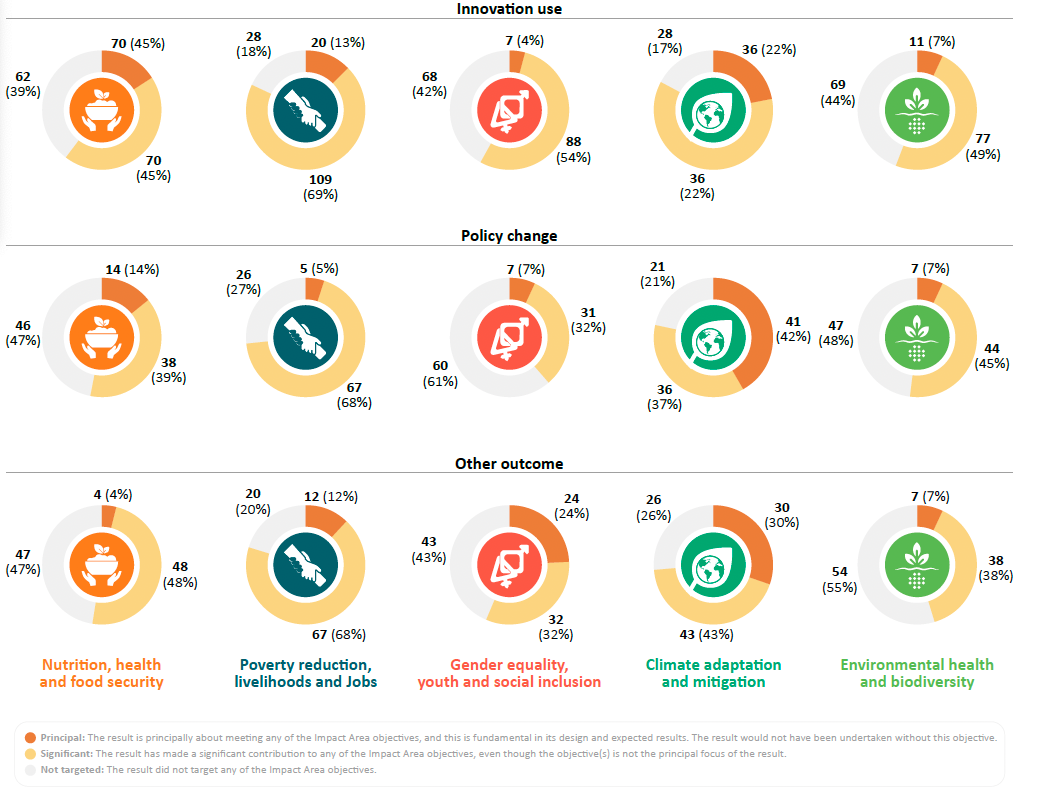
Figure 5 Gender equality is a limited focus in innovation use and policy change outcomes.
One of the more promising patterns in outcomes with a principal focus on gender is the development of gender-responsive breeding networks, seed systems, and crop corridors. These suggest application of gender-related research in pursuit of equitable outcomes at broad agrifood systems levels. Examples include efforts to pilot and establish innovative women-led seed businesses across Asia, in India, in Rwanda and Kenya, and the establishment of dozens of bean business platforms supporting women in bean value chains across 19 countries. In these activities, there is often focus on inclusive entrepreneurship, for instance, through support for women agri-preneurs in livestock value chains in Uganda and Tanzania, in aquaculture in Ghana, and in the review of promising seed businesses models to support women and youth. Within RAFS specifically, we also see Initiative outcomes and outputs tied to youth engagement and entrepreneurship. For instance, policymaker guides on increasing youth engagement in aquaculture were published for Nigeria and Myanmar, as well as reports on youth entrepreneurship in India and training on women and youth innovation platforms were held in Ghana. We would anticipate measurable impacts on these populations in the future.
Science Groups
Attention to gender equality is evident across the three Science Groups. In GI, gender equality featured in 42 percent of results, including 41 percent of outputs and 61 percent of outcomes. Many outputs were innovation development results or knowledge products related to the development of market intelligence methodologies and operationalization of gender-intentional breeding guidance. For instance, in the Breeding Resources Initiative’s development of a gender checklist to support breeding institutions and farm managers in inclusion efforts, and the Market Intelligence Initiative’s publication of a standard protocol to guide gender-intentional product profile design. Gender-related outcomes included the strengthening of breeding networks, demand-driven breeding capacity, and inclusive seed systems, as well as outcomes from these processes. For example, female Nigerian bean and cowpea farmers using improved varieties showed increased productivity, product quality, income, and confidence, and became seed producers and service providers in their communities.
In RAFS, 37 percent of results (37 percent of outputs and 43 percent of outcomes) focused on gender equality. Nearly half of the gender-related outputs (48 percent) were knowledge products, touching on, for example, intersectionality and gender norms in dairy systems in India and Tanzania. Most gender-related outcomes (68 percent) were innovation use results, including application of agronomic and livestock practices, biocontrol technologies, deployment of climate advisory services, and Innovation Package and Scaling Readiness Assessments with attention on gender. For instance, over 18,000 farmers (88 percent of whom were women) in Senegal received weather forecasts, nutrition advice, and agro-advisories via SMS to strengthen their climate resilience.
In ST, 41 percent of results (40 percent of outputs and 63 percent of outcomes) were related to gender. Knowledge products, covering topics such as social inclusion in sustainable water-energy-food-ecosystem management, social protection and climate adaptation and climate resilience, and socially inclusive digital innovation processes in food, land, and water systems, comprised the majority (60 percent) of outputs. Outcomes included contributions to policy and program design among partners, as well as the roll-out of inclusive agricultural services. For example, partners reported adopting guidance around women-led socio-technical innovation bundles in Ethiopia and Kenya, while CGIAR gender researchers developed six background papers that helped shape FAO’s “The Status of Women in Agrifood Systems” report.


